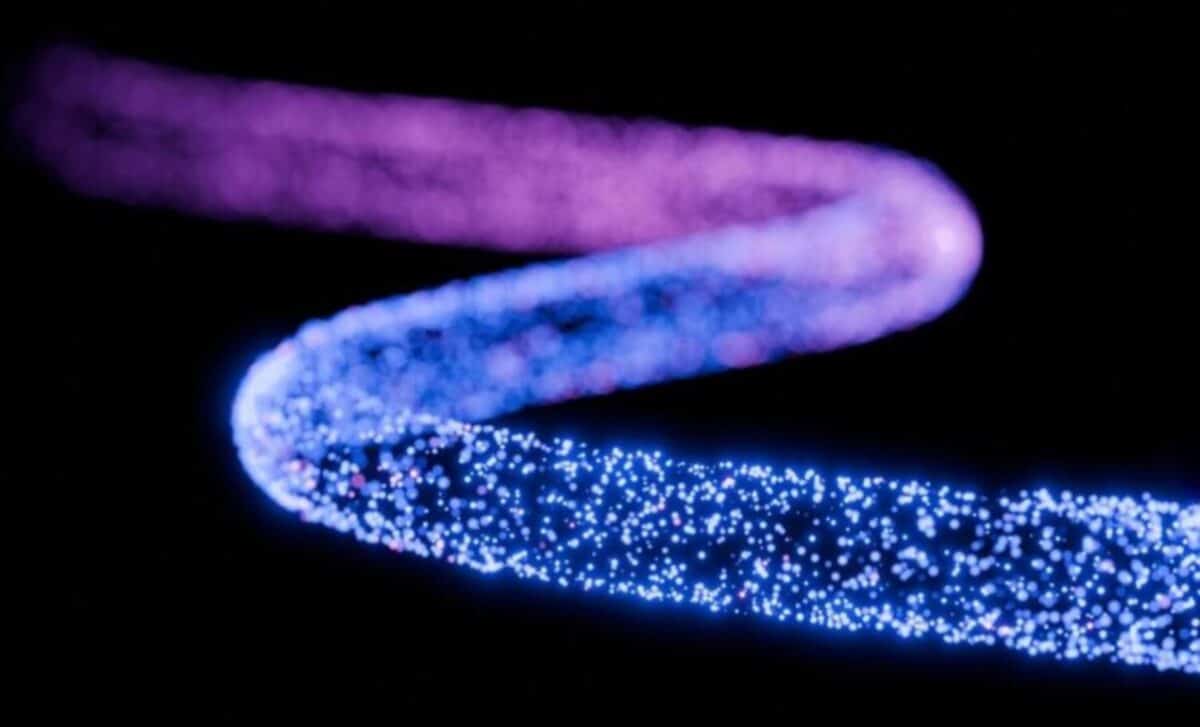
Lydia Amazouz Published on December 25, 2024
Collected at: https://dailygalaxy.com/2024/12/quantum-teleportation-becomes-reality/
In a development that reshapes the landscape of modern communication, researchers have successfully demonstrated quantum teleportation of information through existing fiber optic networks. Unlike the teleportation of objects often seen in science fiction, this breakthrough involves the transfer of information via quantum mechanics, making it instantaneous and exceptionally secure. Quantum teleportation relies on the entanglement of particles to transmit information across distances without physically moving the particles themselves.
What sets this milestone apart is its practical applicability. Previous experiments in quantum teleportation were largely confined to controlled laboratory settings. This new achievement demonstrates that quantum data can coexist alongside classical data on conventional communication networks, a feat previously deemed unattainable. The integration of quantum teleportation into existing infrastructures marks a significant leap toward realizing a quantum internet, where data transmission is not only faster but also inherently secure.
The Science Behind Quantum Teleportation
At the heart of quantum teleportation lies the enigmatic phenomenon of quantum entanglement, where two particles are intrinsically linked such that the state of one instantly affects the other, regardless of distance. This property allows information to be shared between entangled particles without the particles themselves traveling.
However, integrating quantum communication into existing networks has long been considered an insurmountable challenge. Classical communication systems, dominated by millions of photons transmitting data simultaneously, create a noisy environment that interferes with the fragile quantum signals. This led many to believe that quantum teleportation would require entirely new and specialized infrastructure.
“This is incredibly exciting because nobody thought it was possible,” said Professor Prem Kumar of Northwestern University, who led the study. “Our work shows a path towards next-generation quantum and classical networks sharing a unified fiber optic infrastructure. Basically, it opens the door to pushing quantum communications to the next level.”
Breaking Barriers with Real-World Demonstrations
To address the issue of interference, Kumar’s team identified a specific wavelength within fiber optic cables that experiences minimal disruption. By assigning quantum photons to this wavelength and using advanced filters to reduce noise, they successfully transmitted quantum data alongside classical internet traffic.
Their test involved a 30-kilometer (18.6-mile) fiber optic cable, simultaneously carrying conventional data and quantum information. Remarkably, the quantum data retained its integrity despite the heavy traffic of classical signals.
“Quantum teleportation has been demonstrated before, but only under very careful laboratory conditions,” noted Professor Jim Al-Khalili, who was not involved in the study. “The problem is that quantum-entangled particles used to teleport information quickly become entangled with everything else along their path.”
This achievement represents the first successful demonstration of quantum teleportation in a real-world environment, laying the groundwork for integrating quantum communication into existing networks.
Implications for Communication Technology
The ability to transmit quantum information using conventional infrastructure is a game-changer for communication technology. Not only does it make quantum communication more feasible, but it also enhances security. Quantum communication is inherently secure because any attempt to intercept or alter the data would disturb the quantum state, making such intrusions immediately detectable.
“Many people have long assumed that nobody would build specialized infrastructure to send particles of light,” Kumar explained. “If we choose the wavelengths properly, we won’t have to build new infrastructure. Classical communications and quantum communications can coexist.”
This coexistence reduces costs and accelerates the deployment of quantum technology, bringing us closer to realizing a quantum internet. The implications extend beyond communication, impacting fields like quantum computing, secure data transfer, and advanced sensing technologies.
“Being able to make use of quantum teleportation in our existing infrastructure of optical fiber networks would be a huge breakthrough in achieving quantum networks,” added Al-Khalili. “It will have many applications, from quantum cryptography and quantum sensing to quantum computing, and potentially even a new quantum Internet.”
Looking Ahead
The breakthrough comes at a significant time, with 2025 designated by the United Nations as the International Year of Quantum Technology. The researchers plan to build on their success by conducting tests over longer distances and exploring more complex quantum systems. One key focus will be entanglement swapping, a process that allows two particles that have never interacted to become entangled. This technique could link multiple entangled particles across vast distances, creating the foundation for large-scale quantum networks.
“With 2025 designated by the UN as the International Year of Quantum Technology, this research is very timely,” emphasized Al-Khalili.
The team also intends to test quantum teleportation in underground cables that mimic real-world internet conditions. These trials will address the practical challenges of integrating quantum communication into existing infrastructure, paving the way for widespread adoption.

Leave a Reply